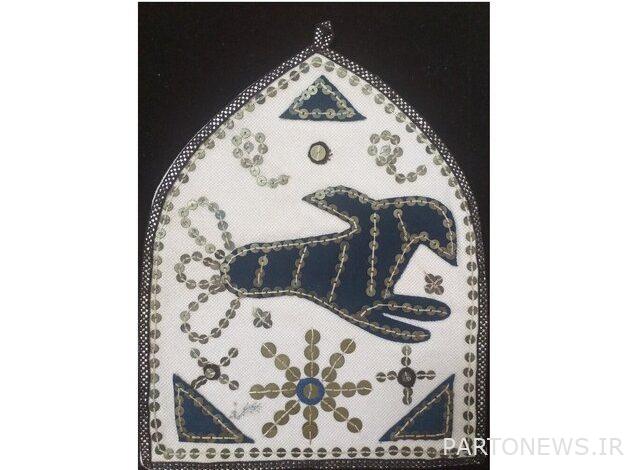Lardedozi, the living heritage of women after 500 years

“Larde embroidery” is the intangible heritage of Semnan province, which includes several handicrafts, including needlework, patchwork and flower embroidery. This heritage with an age of more than 500 years is still kept alive by village women.
According to ISNA, “Biabank village larde embroidery” is one of the old arts of Semnan province, which the rural women of this province have still kept alive. According to the old artists of the village, the age of “Lardeh embroidery” reaches at least more than 500 years.
Larde embroidery is a collection of handicrafts, such as patchwork, flower embroidery, steam embroidery, cream embroidery, sequin embroidery, braid embroidery, stem embroidery, black embroidery, gold embroidery, and navy embroidery. “Larde” means a flat surface on which these artistic processes are implemented. Silk fabric, copper sequins, hand embroidery thread, pieces of velvet fabric, needle, braid tape, cotton thread, coins, etc. are some of the things used for “larde embroidery”.
In the art of “larde embroidery”, first the design is drawn on the silk background fabric and according to the desired design, patchwork, sequin embroidery, cream embroidery, etc. are used. If patchwork is used in the desired design, the piece is prepared from a fabric with the opposite color and made of velvet. Usually, in needlework, the piece of fabric is connected to the background fabric with a mouse tooth stitch and stem embroidery or simple stitching, but in “Larde embroidery”, the piece is connected to the background fabric with copper sequins by hand embroidery thread, which is one of the distinguishing features of “Desert Larde embroidery”. compared to the needlework of other regions.

In larde embroidery, sequin embroidery is always used around the frame of the desired design, which is sewn together in a coherent and connected manner, and at the end of the work, after lining with canvas fabric, the edge of the work is decorated with braids that have a better effect on the work. In “Larde embroidery”, copper sequins are sewn together and at a distance, and are never placed on top of each other.
The designs used in Lardeh embroidery are also unique and include national and local designs, each of which has a special meaning and meaning, such as the ancient Iranian goat design, the design of “Mountain Goddess” of Biabank or Homa Saadat, which is adapted from Homa Saadat in Red Mountain of Biabank. In a way, it is considered the oldest Larde embroidery design. In this design, the side triangles are a symbol of warding off evil and evil, the altar-shaped sequins are a symbol of spirituality, and the dandelion is also a symbol of blessing and goodness.

Another design used is the cedar of life design, which is a symbol of life and the cycle of life. Also, the mannequin design is a symbol of human evolution in life, the lotus or lotus design is a symbol of blessing, birth and freedom (in this design, the bird is flying on the lotus with a wheat stalk in its mouth), the checkered horse design shows the speed in life and freedom, and the design Ivy is a symbol of love and affection, bond and affection (in this design, the flowers and bushes are one in the middle, in pairs and oddly, it represents male and female) are among the designs used in “Lardeh Dozi”.
Hani Rastgaran – the person in charge of registration of the works and taboos of the national heritage of Semnan province – giving these explanations about “Lerde Dozi”, the national heritage of Semnan, further told ISNA: One of the important features of this art and profession is its intergenerational transmission, which is passed down from mothers to Girls, it has been passed down from generation to generation, and village mothers teach this art for free to preserve and pass it on. In fact, two of the main features of an intangible work to be registered are that it should first be receptive to the local community who want to register and guard and protect this work, and secondly, that this work should be alive and manifest itself in the succession of generations. “Lardeh Dozi” had both features with it and is currently one of the works registered in the list of intangible heritage of the province, and for its protection, various trainings are held and it is being promoted with educational classes.
He added: By working on the art of “larde embroidery”, the women of Biyabank village, in addition to meeting the family’s needs, by selling their surplus products, make a significant contribution to the family’s livelihood. Today, the women of this village pay special attention to this art and consider it as the heritage of their ancestors. Biyabank village is one of the valuable historical monuments of Semnan, whose historical context has been registered in the national heritage list. Among the other protection measures of this handicraft is the establishment of “Lorde-Dazoi” workshops in the historical context of the village, which tourists’ visits to these traditional workshops lead to the development and prosperity of tourism.
“Lorde Dozi” was registered with registration number 2591 on February 25, 1400.
Update date:


